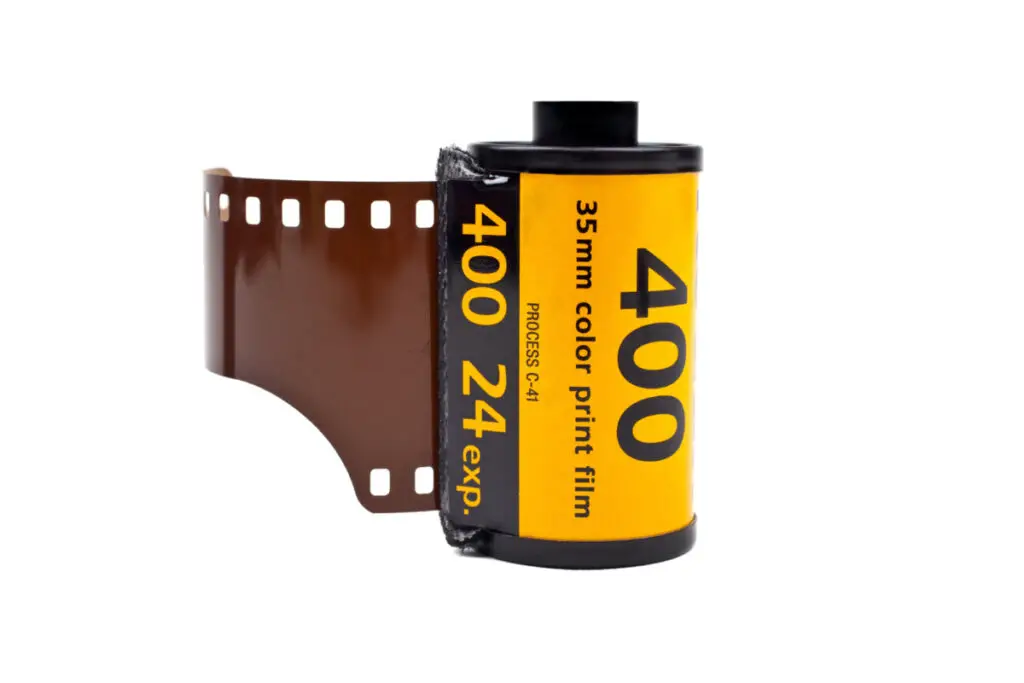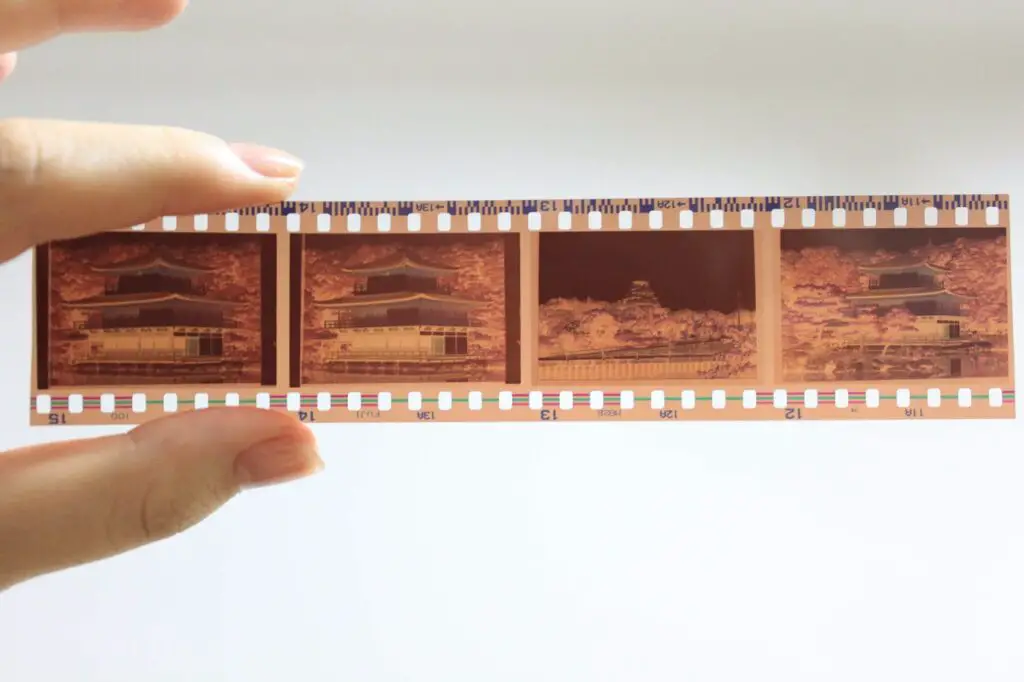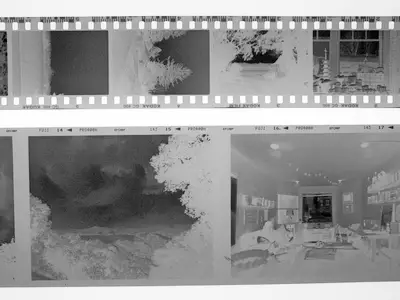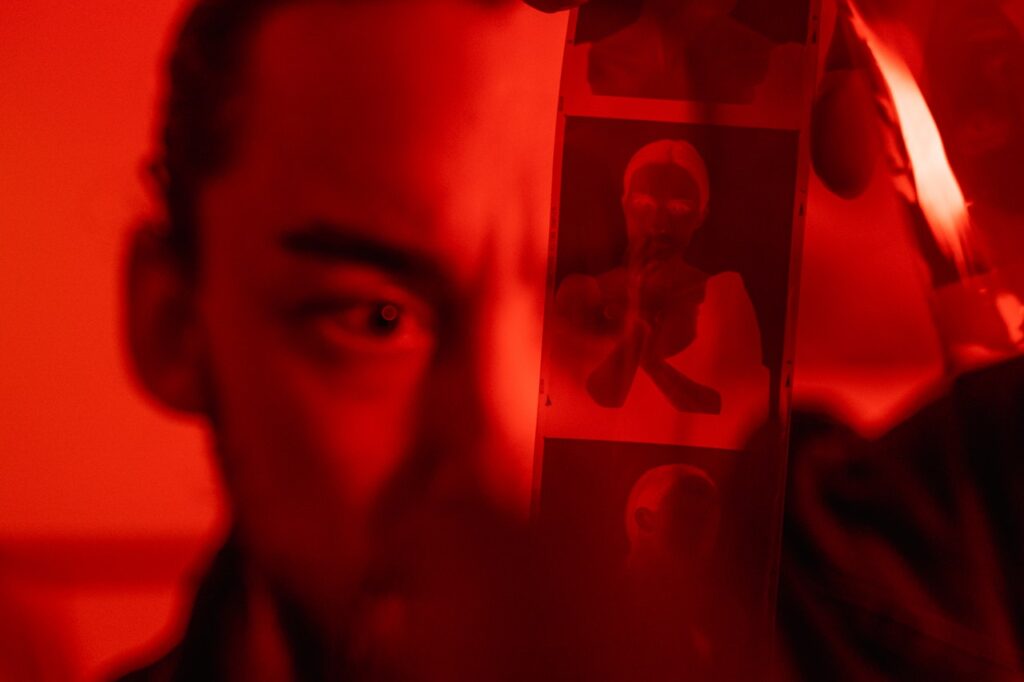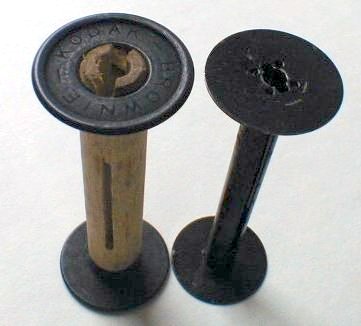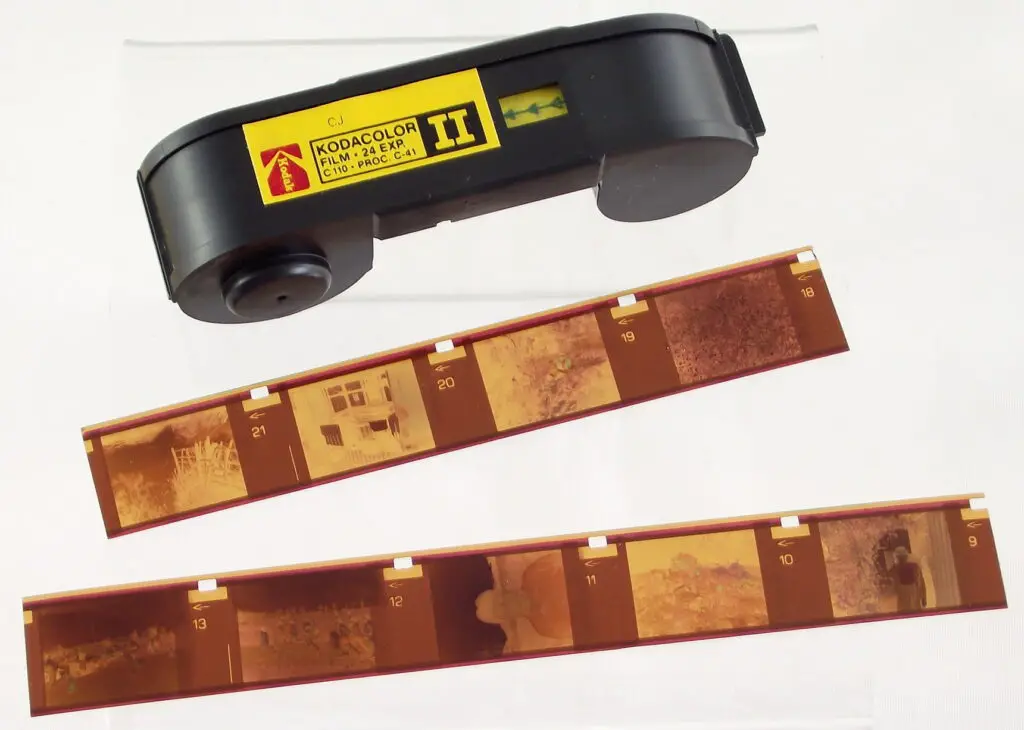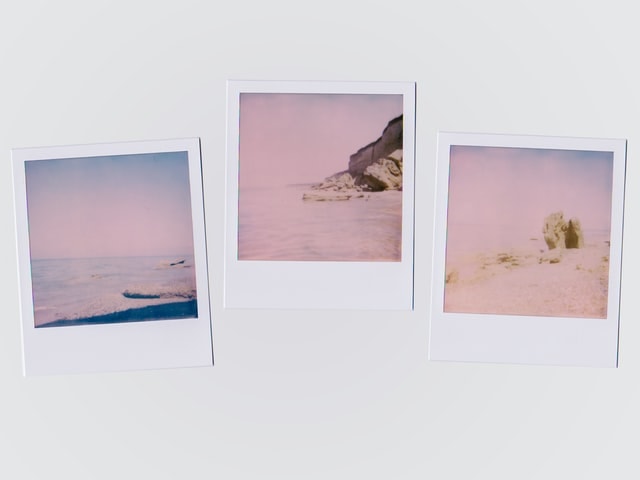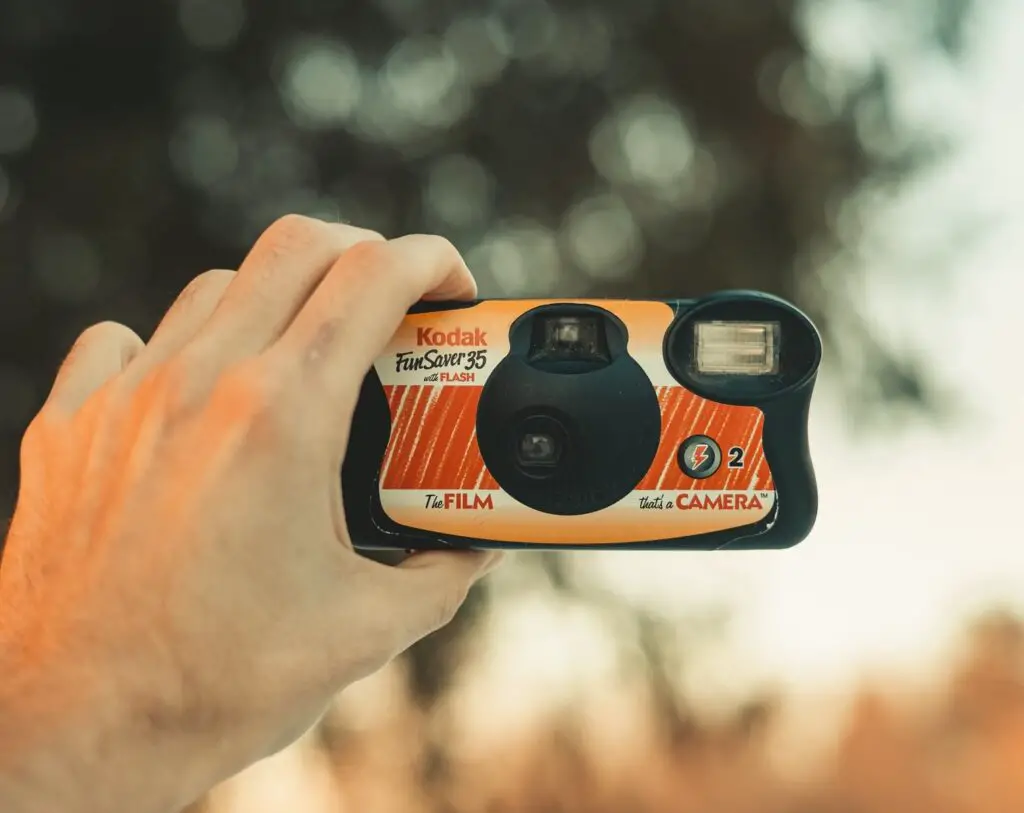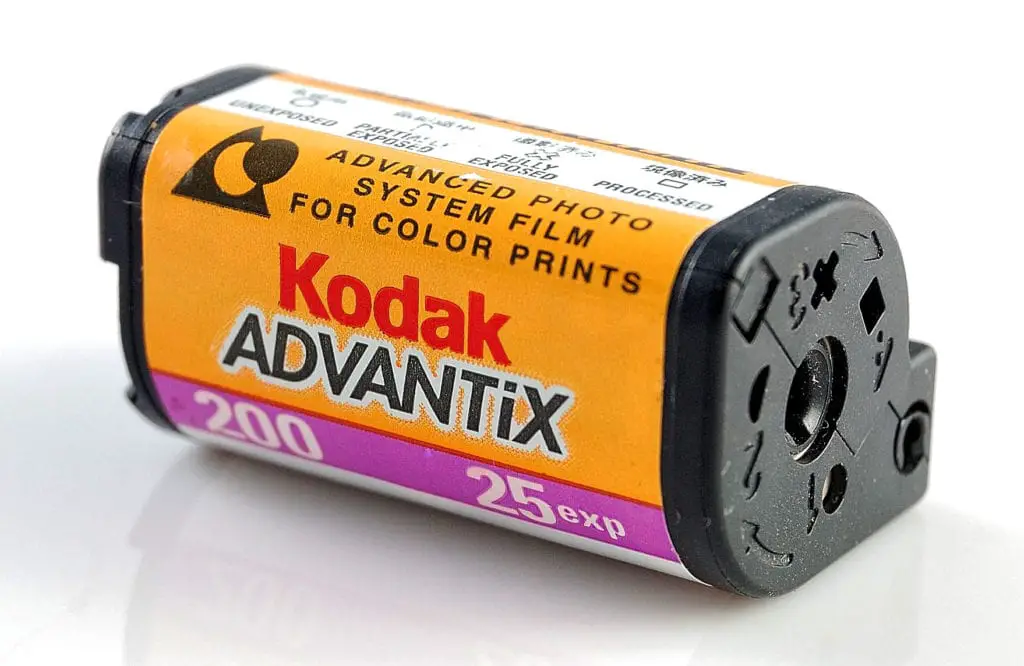When learning photography it is important to know how many shots you can get with each type of roll of film. Partially because this will let you know how many shots you have left take but also so when you are buying film not many rolls you will need to purchase.
The number shots on a roll of film varies by type but generally 35mm film can shoot between 24 – 36 images, medium format (120) film shoots between 4 – 16, 620 film shoots between 9 – 32, Instant film comes 8 – 10 sheets per pack, disposable cameras shoot between 27 – 36, and 110 between can shoot 12 – 24 images.
While the answer above is just a summary, there is a little more to how many images can a film hold shoot. Below is a list of the most popular and widely used film formats that are still available in the market to guide you on the number of shots you can take with a roll of film.
35mm Film
135 film or what is commonly referred to these days as the 35mm film, is the most widely used film format today. 35mm film gets its name from the width of the film, not the actual frame which is 24mm x 36mm. This is the same size as the “full frame” digital sensor in higher-end DSLRs or Mirrorless cameras.
Each 35mm canister of color or black & white film can be purchased in film rolls that can hold between 24 – 36 exposures. 35mm film that hold 36 exposures is the best deal when mailing your film out for development  since most places don’t charge by the exposure. These are the standard exposures you can have with a roll of 35mm from popular brands like Kodak, Fujifilm, and Ilford
since most places don’t charge by the exposure. These are the standard exposures you can have with a roll of 35mm from popular brands like Kodak, Fujifilm, and Ilford to name a few. The label on the box and the side of the canister will tell you the number of shots you can take with that particular roll of film.
to name a few. The label on the box and the side of the canister will tell you the number of shots you can take with that particular roll of film.
See this article if you want to know where to get 35mm film developed and the cost . To know if your 35mm film is used or unused, see this article
. To know if your 35mm film is used or unused, see this article .
.
120 Film
120 film (also known as medium format) is the second most used film besides 35mm film. It is one of the two medium format films that are still available today with the other being the 220. The number 120 is not the size of the film but rather the film format designation created by Kodak. Since medium format cameras span different image formats from a 6×6 cm square to 6x17cm long rectangle, the number of exposures you can take with a medium format film depends on what image format you are shooting and can vary between 4 – 16 exposures. The table below lists the most common image formats for the 120 film and their corresponding exposure count per roll.
Image Format | Aspect Ratio | Number of Exposures (120 film) |
|---|---|---|
6 x 4.5 cm | 1:1.35 | 15 – 16 |
6 x 6 cm | 1:1 | 12 – 13 |
6 x 7 cm | 1:1.25 | 10 |
6 x 9 cm | 1:1.50 | 8 |
6 x 17 cm | 1:3 | 4 |
See this article for the cheapest place to develop medium format (120) film and how much it costs. To know if your medium format (120) film is used or unused, see this article
and how much it costs. To know if your medium format (120) film is used or unused, see this article .
.
220 Film
220 film is another medium format film that is still being used today. It has the same exact dimensions per frame as the 120 film but the total length of the film roll is twice the length at 144cm, which doubles the number of exposures you can take with a 120 film camera to between 8 – 32 exposures. 220 film also doesn’t have a paper back like 120 film to make all the roll fit on the same spool. There are currently not that many companies still producing 220 film but you can still find it for sale (like here on amazon.com).
Similar to 120 film, the number of exposures varies depending on the chosen image format. The table below lists the popular image formats with the corresponding number of exposures.
Image Format | Aspect Ratio | Number of Exposures (220 film) |
|---|---|---|
6 x 4.5 cm | 1:1.35 | 32 |
6 x 6 cm | 1:1 | 24 |
6 x 7 cm | 1:1.25 | 20 |
6 x 9 cm | 1:1.50 | 16 |
6 x 17 cm | 1:3 | 9 |
620 Film
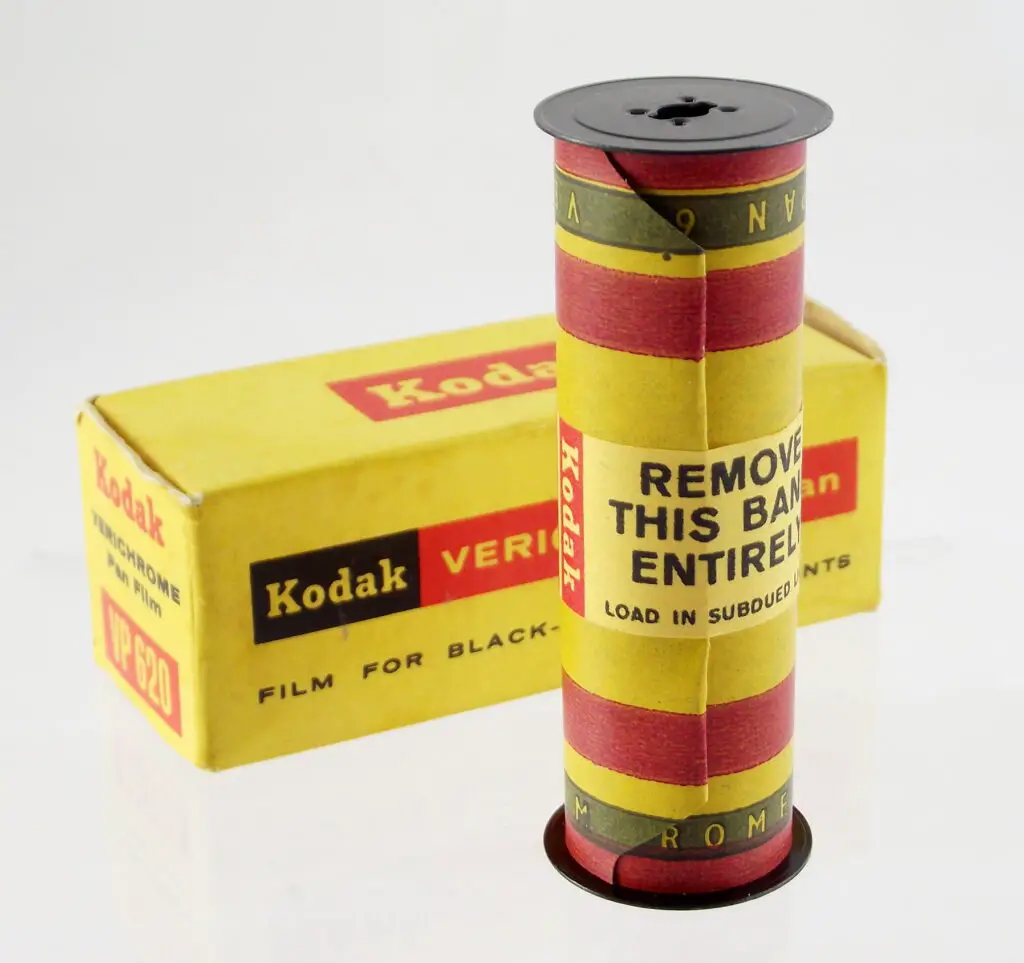

620 film was created by Kodak in the 1930’s as a smaller alternative to 120 film. The film is exactly the same size as 120 film (6 cm wide) so it can fit as many images onto the film (4 – 16 exposures) but the film spool is slightly thinner and more narrow to be able to fit into smaller cameras. You can still purchase the 620 film spools to use 120 film with older cameras by either rewinding new 120 film onto the 620 film spool in the darkroom or by cutting down the plastic spool to fit into a 620 camera (like a Kodak Brownie) and using a 620 spool to take up the film. There are not that many companies still producing 220 film but you can still find it for same (like here on amazon.com)
or by cutting down the plastic spool to fit into a 620 camera (like a Kodak Brownie) and using a 620 spool to take up the film. There are not that many companies still producing 220 film but you can still find it for same (like here on amazon.com)
110 Film
110 film was introduced in 1970’s by Kodak as pocket size film and is cartridge-based film so the roll is inside a plastic, light-proof container. The cartridge holds the film before and after exposure so it is very easy to load. 110 cartridges came in 12, 20, or 24 exposures. The film is 16mm wide so the negatives are very small, which made it grainy and blurry when enlarged. Each 110 canister has an exposure label and the frame number is visible on the back of the cartridge that can be seen on the back of the camera for reference.
Although the film went out of fashion in the 1990’s due to digital cameras and limitations due to it’s small negative size, the photographic company Lomography started to make the film again in 2011 and still offers many different options like color, black & white, color slide film, among others. The most common 110 film found today has 24 shots per roll.
See this article for a comparison of places that develop 110 film and how much costs. To know if your 110 film is used or unused, see this article
and how much costs. To know if your 110 film is used or unused, see this article .
.
Instant Film
Instax and Polaroid are popular brands of instant film cameras today. Both of these cameras are loaded with cartridges or film packs that contain individual film sheets that develop right after they develop and fully develop an image in less than 90 seconds.
cameras today. Both of these cameras are loaded with cartridges or film packs that contain individual film sheets that develop right after they develop and fully develop an image in less than 90 seconds.
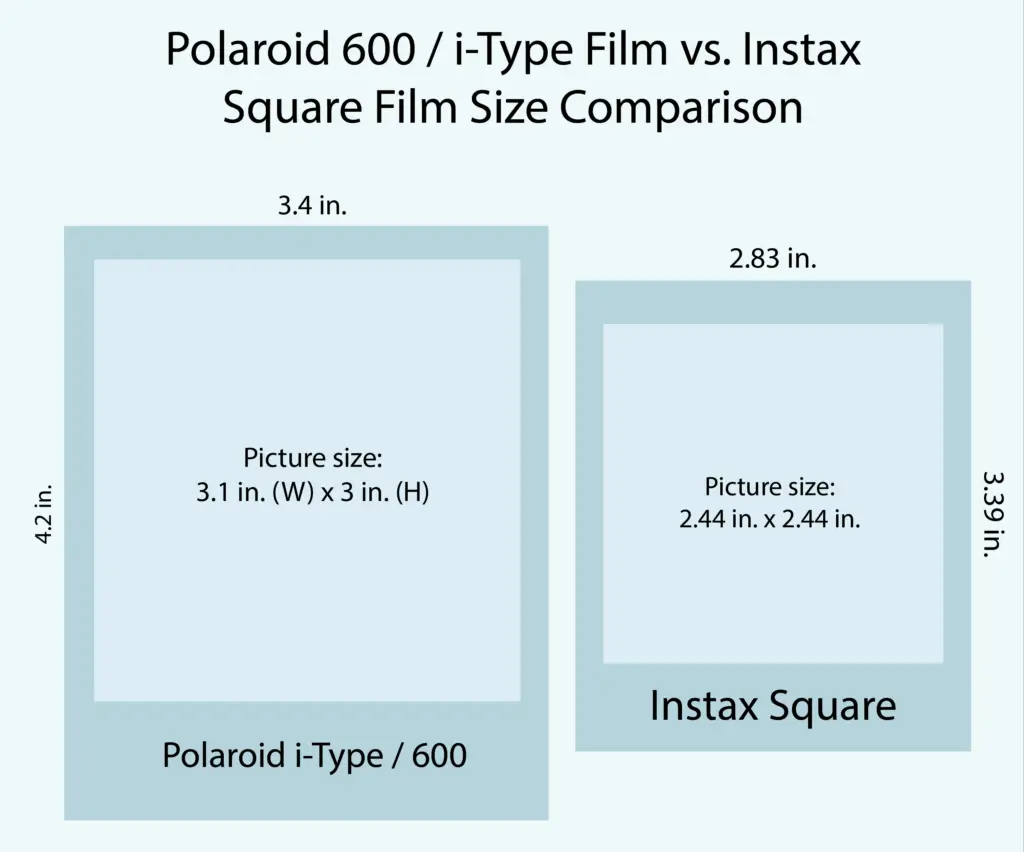
All Instax film packs whether it is Instax Wide, Instax MIni, or Instax Square film have 10 exposures per film cartridge (note that Instax Mini film  is the cheapest). All Polaroid film
is the cheapest). All Polaroid film including Polaroid i -Type, Go film, Polaroid 600, and SX-70 film comes in pack of 8 exposures per cartridge.
including Polaroid i -Type, Go film, Polaroid 600, and SX-70 film comes in pack of 8 exposures per cartridge.
Both instant films are commonly sold in individual film packs or bundles of 2 or 5 film packs so you get somewhat of a discount.
Disposable Cameras
Disposable cameras, or single-use camera, have a single roll of film preloaded into the camera. These cameras are point & shoot style, meaning you don’t have much focus or exposure control. Also, they have a unique, specific look since the lens is made of plastic. These cameras still need to be processed like any other film camera before you can see the images. See this article for a list of places to get a disposable film camera developed and how much it cost.
since the lens is made of plastic. These cameras still need to be processed like any other film camera before you can see the images. See this article for a list of places to get a disposable film camera developed and how much it cost.
The most popular brands are Kodak and Fujifilm and typically have 24-27 shots loaded onto each disposable camera with 27 shots being the most common but some can shoot as high as 36 exposures. The number of shots or exposures the camera can take is indicated on the box and on the camera body itself.
and typically have 24-27 shots loaded onto each disposable camera with 27 shots being the most common but some can shoot as high as 36 exposures. The number of shots or exposures the camera can take is indicated on the box and on the camera body itself.
See this article for more about disposable cameras .
.
APS / Advantix Film
The Advanced Photo System (APS) format was introduced in 1996 (Kodak’s version was called Advantix) as an upgrade to 35mm film by making loading and unloading film into a camera automatic. Advanced Photo System camera used single spool cartridge similar but smaller and thinner (58% smaller) to the 35mm film roll but had advanced features such as a magnetic coating to record exposure data and markers for roll exposure status.
The APS cartridges came with 15, 25, and 40 exposures per roll, the film was more scratch resistant, stronger than 35mm, and had a special film canister than made it easier for film processors to develop film. Some APS cameras had the ability to rewind and remove cartridges mid-roll, reload them later, and resume from the last frame without the risk of ruining the negatives.
To know if your APS / advantix film is used or unused, see this article .
.
Conclusion
Being familiar with cameras and film types you are using is important in analog photography since, unlike digital photography, you have a much more limited number of exposures. Knowing how many exposures a film roll has will help you know when it’s time to purchase new film and how many you have left to take.
See this article for how to know when if film is used or unused or how to know when your film camera is out of film
or how to know when your film camera is out of film .
.

